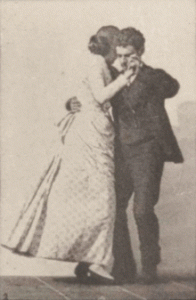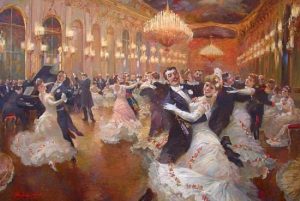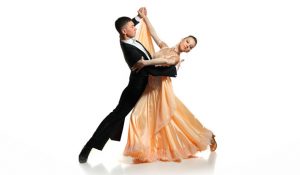Waltz, a ballroom and folk dance, is performed mainly in a closed position. Dance and music can be traced back long in history. However, in sixteenth-century Europe, there are many references to dancing that includes sliding or gliding that eventually evolved in Waltz.

It is believed that a dance called Waltzer was started by peasants of Bavaria, Tyrol, and Syria and that was meant for couples. While the eighteenth-century upper-class people continued with minute, men and women from the general class relished the purest as well as the most innocent form of enjoyment with the waltz.
The transition from country to town gave the steps and style of Waltz, variations in different ways. In the nineteenth century, the dance basically meant rotating rather than straightforward dance movement without turning. People used to enjoy the grace and beauty of the dance.

The position of the couple is the most important part of Waltz. The lady and the gentleman stand exactly opposite to each other. The man places his hand on the lady’s waist. The hold should be firm but not slouching.
The lady slightly turns her head towards her left shoulder and the man turns his head slightly towards her right shoulder to preserve a perfect balance. Sometimes the ladies used to lay their heads on their partner’s shoulders, but the position was important and the lady would not be able to dance if she turns her head in the opposite direction.

The lady then had to throw her head and shoulder a little back and the man used to lean a little forward. Once the position is gained, the dance step starts. The rapidity of the waltz is great in Germany, but slackening the pace every now and then adds elegance to the dance.
Waltz Steps
The Russian men were known for their performance in waltzing and they had the caliber to dance around the room with a glass of Champaign without spilling a drop. The evenness in waltzing is definitely very graceful and is attained by taking long sliding steps. However, in England where the rooms are small, it is less practiced.

In Germany, a rope is drawn across the room and when one couple stops and retires, another couple is allowed to pass the rope to take the place. The pace and the rapidity are balanced so that other couples are not endangered.
When the rooms are crowded, it becomes very important to keep the eyes open and turn in every direction to avoid the risk of collision or chance of fall. Violent dancing can have severe consequences not just for the delicate ladies, but also result in a dangerous fall.

When a man takes the position of the waltz, it is important he lightly keeps his palm on the lady’s waist because if it is pressed, it will not just leave a disagreeable impression on her ceinture, but also on her mind. So, it is very important to be careful not just when taking the position, but also while dancing.
Flat Foot Waltzing
In flat foot Waltzing ladies allow their partners to almost hug them when dancing and men lift ladies almost up the ground. This dance form works well only when the man and the lady are familiar and comfortable with each other.
A good flat foot Waltzer can dance on even one foot. The legs and the body bends very little while dancing. Waltz is a smooth, graceful and delicate dance form, no doubt.
Viennese Waltz Dance
In the nineteenth and early twentieth century, a number of different forms of waltz existed. Today, both the faster Viennese waltz, which was made famous by the Strauss family as well as the slower version of American and international styled waltz are popular.
More Info On- Quadrille Dance, Crinoline, Victorian Era Dancing Facts, Victorian Era Entertainment